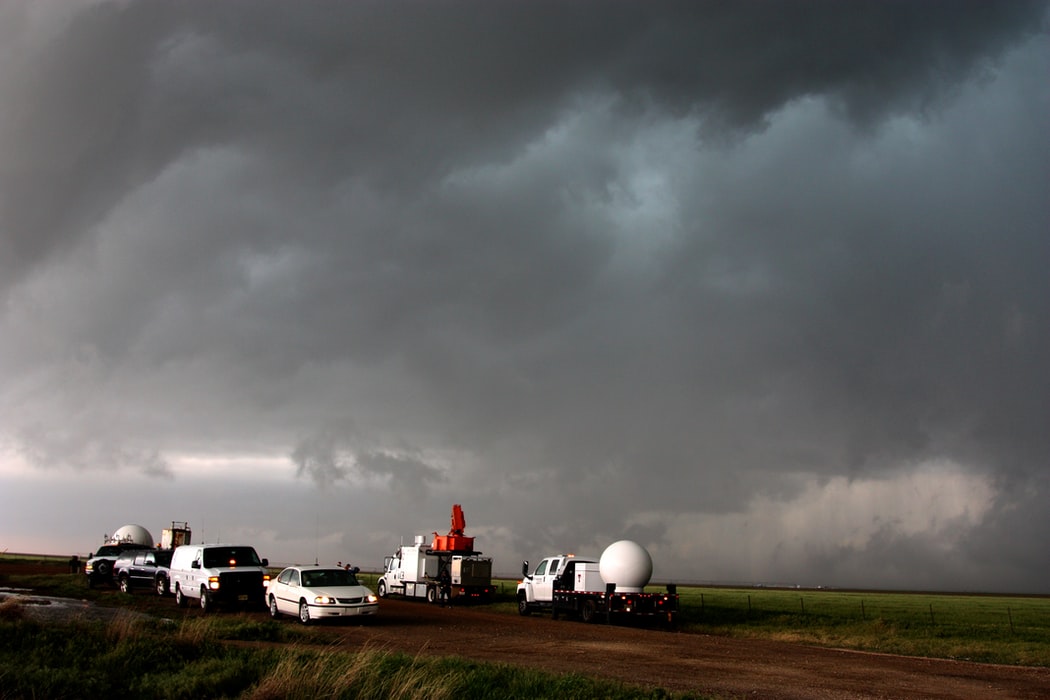How Big Data Can Enhance Weather Forecasting

In the past, many users complained that weather forecasts published on websites and mobile apps were highly inaccurate. However, they have become increasingly reliable over the last few years. So what changed?
The biggest reason behind the newfound accuracy of digital weather forecast is the use of data science in the current models. Even though weather forecast applications always relied on data collection and analysis, the sources and algorithms have changed a lot in the past few years. In this article, we will discuss how Big Data has contributed to the accuracy of weather forecasting.
How Does Modern Weather Forecasting Work?
The process of collecting and analyzing digital data has two main steps. First, the data gets collected from various sources. After that, a set of algorithms analyze the data and deduce the weather related information from it. Modern weather forecasting applications use artificial intelligence (AI) and machine learning to achieve accurate results.
Big Data is a universal term that applies to massive volumes of data obtained in various forms and structures. The data gets drawn from numerous sources and then goes through data processing to provide the information needed for several purposes.
Weather forecasting is one of the industries that utilize information gathered by Big Data firms. Modern data firms have not only started gathering data from a lot of sources, but they have also started processing and analyzing the data differently.
One of the latest technologies that altered the landscape of data mining is called the Internet of Things (IoT). The technology gathers information from every device or sensor that is connected to the Internet.
You may be aware of the use of this technology already if you have used a smartwatch or a small band. These devices collect information such as your heartbeat, walking speed, distance covered, and several others, and relay them to your smartphone.
The primary objective of machines is to reduce human labor. So they have been designed to share information between them with or without human interaction. IoT uses similar technology to gather data from every smart device that interacts with each other and the Internet.
For example, IoT would monitor how your smartphone interacts with the cellular network tower to collect weather-related information. Smartphones interact with network towers using microwave signals, which behave differently in various weather conditions. Cellular network providers gather this information and pass it on to weather intelligence companies like ClimaCell.
The weather intelligence company feeds that information into their algorithms to deduce climatic data that they can publish on their website and mobile apps. However, the success of a weather app or website is not just reliant on accuracy anymore. There are several other factors at play. If you wish to learn about the best weather apps available now, you can read about the comparison here.
IoT and Weather Forecasting
If you have been to the Pacific Northwest, you might have noticed how the weather can change drastically in short distances. Traditional ways of accumulating Big Data for weather forecasting did not allow to predict such localized fluctuations in climatic conditions.
However, with the Internet of things technology, weather forecasting companies like ClimaCell can gather data from millions of devices, such as smartphones, street cameras, cars, cellular network towers, and any other device connected to the Internet at a particular location. However, they do not gather the data directly.
They have to rely on data providers to get the information and feed it into their algorithms to obtain accurate localized weather data for their customers. With the use of this technology, weather forecasting has become more accurate than before. Forecasters can now predict the path of climatic disasters like storms and hurricanes quite accurately and warn people well in advance.
Data collected by the use of IoT technology has proved to be beneficial for several industries. Some of those industries are:
- Agriculture – Farmers can now get accurate weather data to feed into their irrigation and management systems to achieve better productivity and reduce costs.
- Sports – Several sports management companies use the data to determine if the conditions are ideal for training and events.
- Airlines – Major airline companies use the data to plan their routes and schedule events at the airport.
- Air and land freight – Both air and land freight industries utilize the weather data to choose the routes and roads.
- Healthcare – The healthcare industry can get information related to air quality index and pollen distribution to help patients with asthma, COPD, and pollen allergy.
Other than these, several other industries also rely extensively on the weather data obtained by technology, such as maritime, railroad, renewable energy, construction, and insurance. While it is true that the information gathered by these tools do not solve climate-related problems, they do make it easier to prepare and manage them.
The present accuracy of weather forecasting has been one of the key factors in predicting and managing the series of storms that have ravaged America this year. Without the help of such accurate predictions, the loss of life and property would have been unimaginable.


























